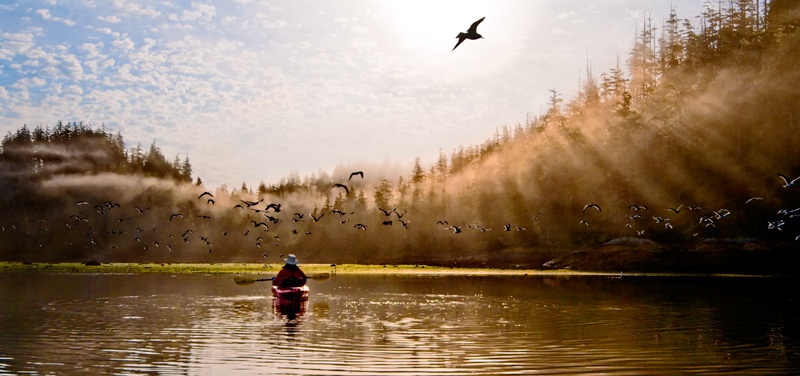Murray Labyrinth back to Port McNeill
/We pulled the anchor (yes, we had enough "power" in the battery banks to get this done without manual winching!) and were under way at 8:00am. We had a date with a mechanic back at Port McNeill and I wanted to traverse the channel out of the Labyrinth with a couple of more feet of water under the keel. This would also make for a slightly wider channel. Given that the winds were 15-20 knots with gusts to 25, I wanted a little more wiggle room as we negotiated the serpentine path through the rocks.
We made it out of the Labyrinth with no issues, and we really encourage like-minded boaters seeking solitude to try it. Once out, it was indeed blowing, the canvas on the flybridge roared and rumbled in protest. We hugged the mainland coast, making our way past Blunden Harbour before turning to establish a direct course to Port McNeill. If the Strait was too churned up, our plan was to tuck into Blunden and wait out the winds as they were forecast to subside during the day.
The weather was about as forecast and we headed into quartering three foot swells topped by one foot waves. With the stabilizers on, the ride was tolerable, so we continued on to our rendezvous with the mechanic.
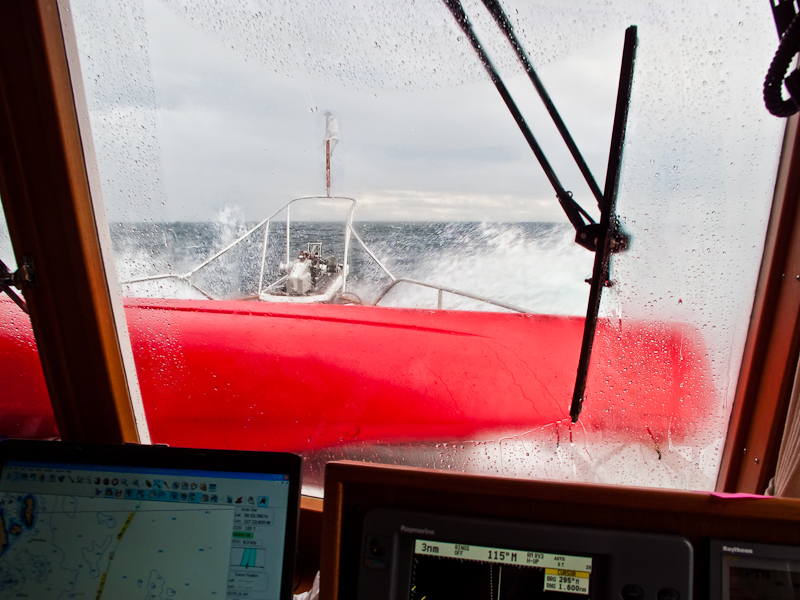
The Straight Kicks Up
Steve “Batman” Jackman (General Manager of Port McNeill Fuel and Harbour. When you see Steve you'll have to ask him how he earned the Batman moniker) made arrangements to have Graham McDonald meet us on the docks upon our arrival.
Graham comes highly recommended by Steve and that’s about as strong a recommendation as you’ll find. Graham, in his sixties, seems to be able to tackle almost any electrical or mechanical problem you can throw at him. He possesses a quiet confidence built, I think, over his success in fixing almost anything that can break. We came to know this because during our three days together he regaled us with a range of stories about his exploits and his insights into the nature of us all.
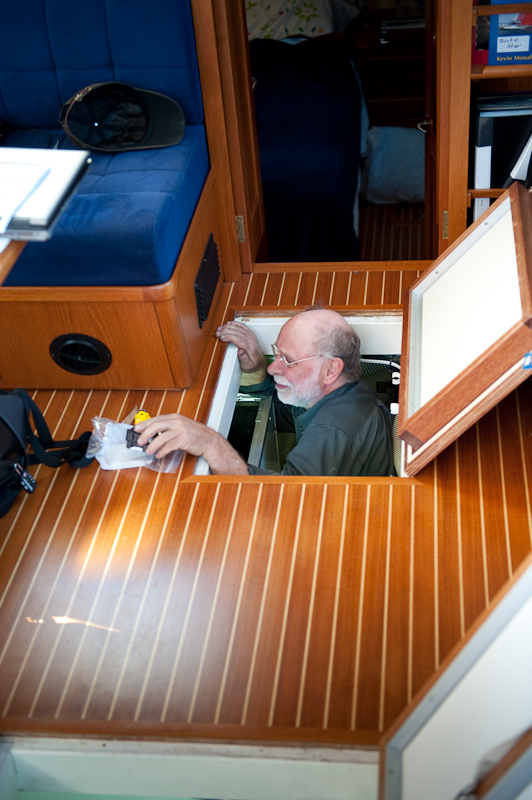
Graham to the Rescue
Graham set to work and shoehorned himself into the aft most reaches of the engine room where the afflicted parts of the generator reside. After a hour of dismantling the generator enclosure and the electronic control module that lives on top of the generator, Graham emerged with what was left of the circuit breaker that protected the generator's components.
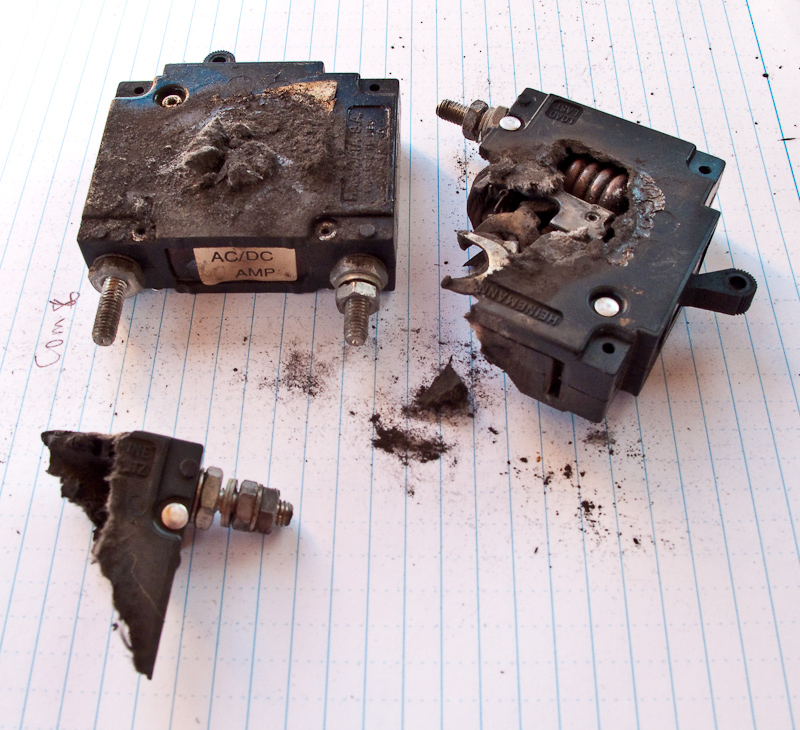
The Remains of the Circuit Breaker
I don't think even the circuit breaker's mother would have recognized this pile of debris as its own. The breaker had burst open and spewed its guts during its final death throes. The picture says it all. And about 4pm, the search for a replacement part began.
Graham called his supplier to order up a replacement which would arrive the next day on the 3:30pm bus from Qualicum. While in today’s world that would seem an eternity, remember where we are and how far we are from any major population center. At the same time Brian, from Northwest Explorations, was on the hunt to secure the same part along with anything else Graham might need to repair the afflicted power generator.
It’s important to remember that getting a new circuit breaker in place was just the beginning of the troubleshooting process. Once the breaker was in, there still existed the possibility that other components had failed and would need to be replaced.
Brian had the advantage of being in Bellingham, Washington with easy access to all the parts and dealers along the U.S. West Coast. Ultimately he had Lugger, the Northern Lights generator manufacturer, put together a “care package” of parts. The disadvantage of being in the U.S. is that there are Customs challenges when sending parts into Canada that can delay arrival. Combine this with the fact that there are few options for transportation of the parts once secured. Scheduled air service is limited and charter flights are very expensive. To Northwest Explorations' credit, they explored every possible option and all were “in the mix”. The final decision would come down to what would get the parts to us the fastest.
We were happy to plug into shore power and get our refrigeration and freezer back, as everything was stuffed to the gills with enough food for 3+ weeks. However, when we plugged in, the refrigeration/freezer units did not respond. We trouble shot some more and found that when the "genny" circuit breaker fried, the fuse went on the Grunert refrigeration control unit. Luckily, Steve Jackman's auto parts store at the head of the dock had the 10amp fuse we needed.
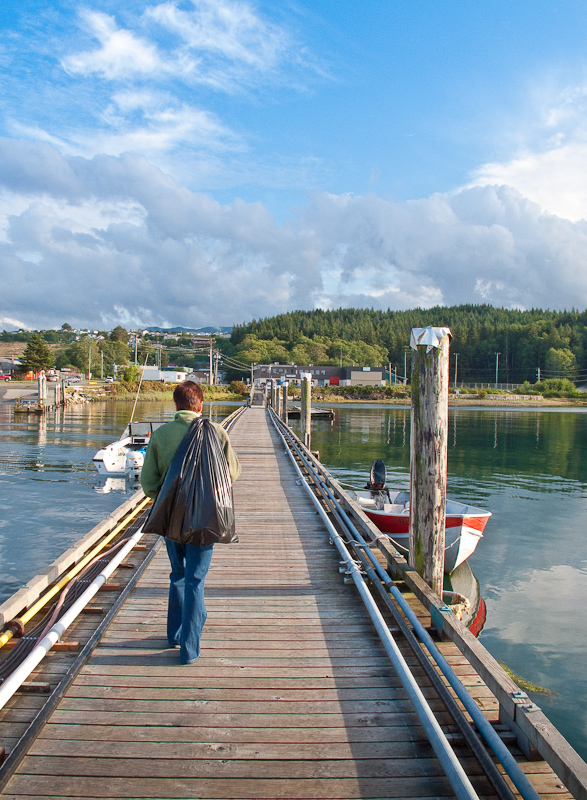
Karen Takes the Garbage "Out" on Her Way to Buy a New Fuse
Back in the town of Port McNeill, we went back to our favorite place to dine, the Northern Lights restaurant. The salmon in puff pastry was great and the Keith Alexander Amber Ale helped us shrug off the changes in our plans to some degree. The day was also made better by meeting up again with Captain Dave from the lovely 80+ foot custom yacht we had seen on the docks earlier, who offered us a tour and raised Karen's spirits by letting her live vicariously for a while. She especially admired the heated bathroom floors, under lit bathroom sinks, and killer galley with a cold room for storage. Bob? He was into the forward looking sonar.
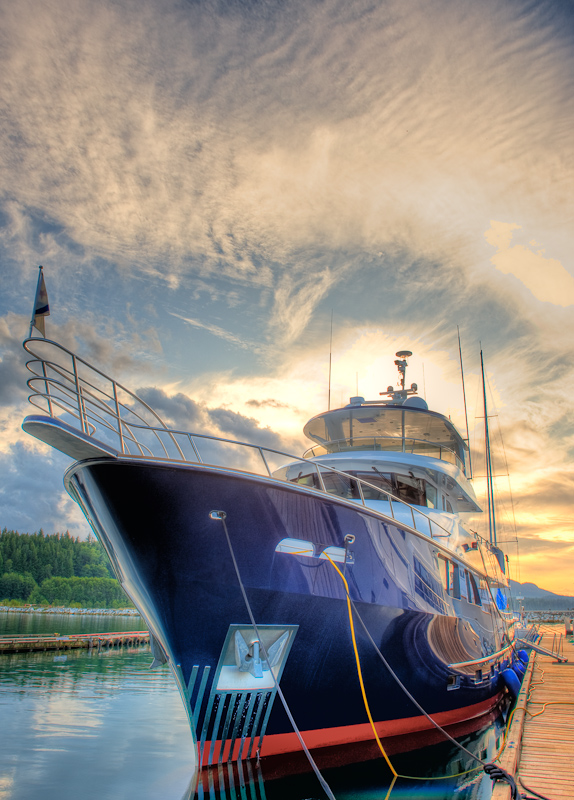
Our Big Beautiful Neighbor at the Docks


 Beautiful Sunset in Murry Labyrinth
Beautiful Sunset in Murry Labyrinth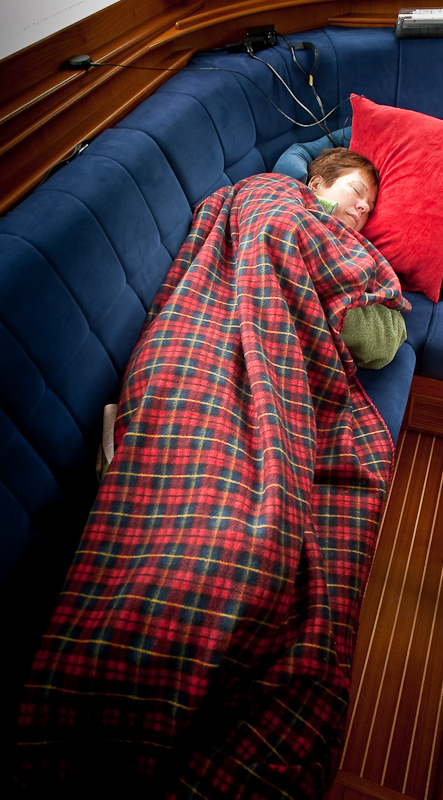 Karen Napping
Karen Napping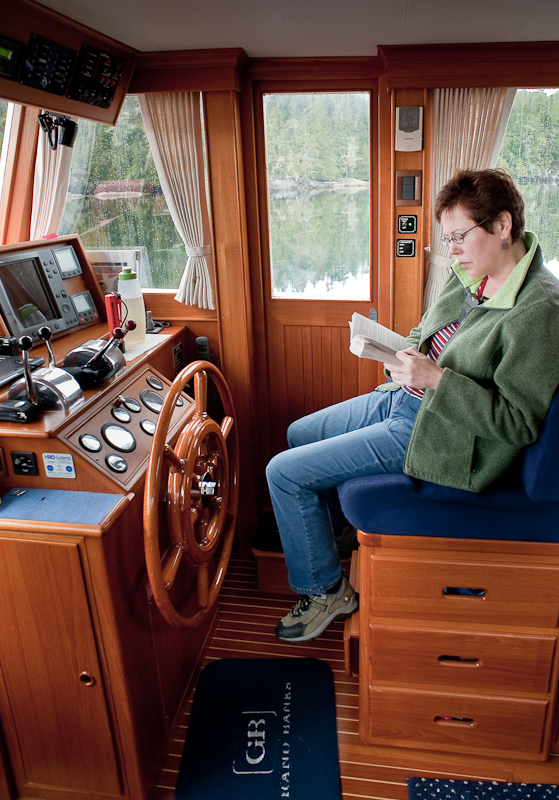
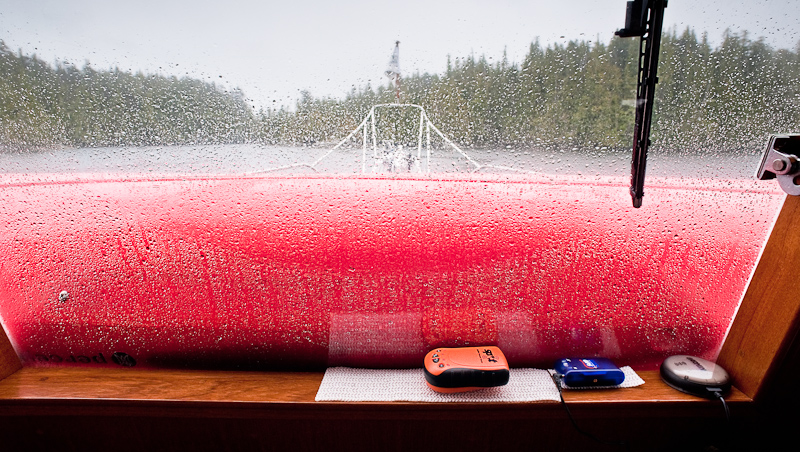

 A Fellow Cruiser Enjoys A Calm Ride on Queen Charlotte Strait
A Fellow Cruiser Enjoys A Calm Ride on Queen Charlotte Strait Entering the Southwest Arm of Miles Inlet
Entering the Southwest Arm of Miles Inlet



